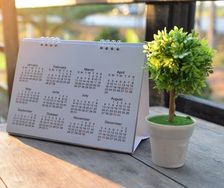Yates Account
Join now
Create a Yates account today!
Sign up to join the Yates Garden Club for monthly e-mails packed with seasonal inspiration, tips for success & exclusive promotions.
Plus if you’re a Garden Club member you can take part in the Yates Growing Community - a blog to share successes, get advice & win prizes in fun challenges along the way!

Forgot password
Enter the email address associated with your account, and we'll email you a new password.

Be Proactive with Rose Care.
To keep rose bushes healthy and to earn a fabulous floral display, rose care can be broken down to 2 simple steps to take, during winter:
1. Pruning
While roses are leafless, it's the best time to completely remove dead stems (these are the ones that are grey and dry-looking). Then, cut about ⅓ of the length off all the remaining healthy fresh stems.
It's good practice to cut each stem down to just above an outward-facing bud. If you’re a bit unsure, here's a more detailed rundown on pruning.
You can use sharp hedge shears or loppers rather than secateurs, if that's what you have. Secateurs make a neater job, but it’s always better to have a crack at pruning roses than to leave them unpruned. Don't be shy, it's harder to mess it up than you think!
If you live in a really cold area, delay pruning until August. Earlier pruning can stimulate new leaf growth, that could be damaged by frosts.
2. Spraying
After pruning, spray the rose stems with Yates Lime Sulfur. This is your best opportunity of the year for a protective spray. Lime sulfur is a smelly, but very effective way to help break the rose pest cycle.
Used at the higher ‘winter rate’, Yates Lime Sulfur will help control scale insects. Scale are lurking on rose stems during winter, waiting for new tender spring stems to feast on. Breaking the scale life cycle during winter gives roses the best possible fresh start in spring.
In warmer areas where rose leaves don't drop off on their own, Lime sulfur mixed at the winter rate will defoliate the leaves, resulting in bare stems. For other plants this might be harmful, but it's exactly what roses need! Roses are naturally deciduous, so they do best with a rest period over the winter. Lime sulfur forces the rose plant into true dormancy, which means...more flowers!
By doing these 2 simple tasks, you'll get your roses into peak condition for spring - they will reward you for it!














Share
Share this article on social media